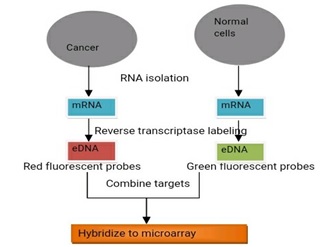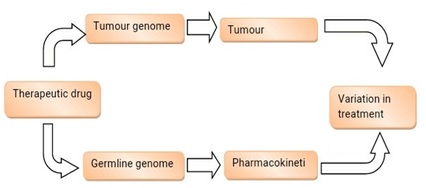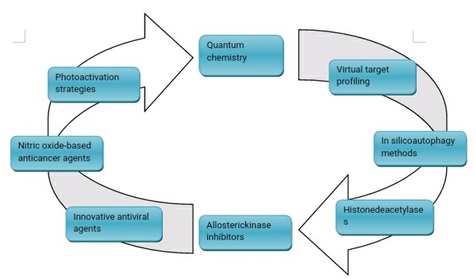Novel approches in drug design involves development of new chemical entities for chemical and bilogical research. It also involved in process of drug design, development and Discovery. It involves multidisciplinary field, medicinal chemistry, pharmacology, drug delivery pharmacokinetics and pharmacodynamics, pharmaceutical and biomedical analysis, gene delivery, pharmaceutical biotechnology, drug targeting, pharmaceutical technology, clinical drug evaluation.
INTRODUCTION:
The drug is most many times a natural small molecule that activates or inhibits the feature of a biomolecule such as a protein, which in flip results in a therapeutic gain to the patient. In the most fundamental sense, drug diagram entails the graph of small molecules that are complementary in form and cost to the biomolecular goal with which they engage and consequently will bind to it. Drug sketch often but now not necessarily relies on laptop modeling techniques. This kind of modeling is frequently referred to as computer-aided drug design. Finally, drug layout that relies on the expertise of the three-d structure of the biomolecular target is acknowledged as structure-based drug design. They involves, drug which bind to a target (e.g. protein, nucleic acid).
Selected/designed molecule should be:
• organic small molecule,
• complementary in shape to the target,
• oppositely charge to the bio-molecular target .
The molecule will:
• interact with target,
• bind to the target,
• Increase or decrease the effects of biomolecules.
Novel drug approaches like
• CADD (Computer Aided Drug Design),
• Molecular Modeling,
• Structure based drug design,
• Analog drug design,
• Combinatorial chemistry,
• Computational chemistry,
• Array technology,
• Pharmacogenomics,
• Combinatorial Chemistry,
• Proteomics,
• Recombinant DNA technology, etc.
METHODS:
1. Array technology
2. Pharmacogenomics
3. Combinatorial Chemistry
4. Proteomics
5. Recombinant DNA technology.
1. Array technology
• Based on RNA & DNA hybridisation reaction.
• Simultaneously several of gene can be analysed.
Advantages:
• Miniaturisation,
• Development of fluorescent labeled nucleotides, which is detected by laser screening.
Methods used:
• Chips located with synthetic oligonucleotides.
• Chip attached with DNA fragment.

FLOWCHAT 1: Array Technology between Normal Cells & Cancer Cells
Types:
1. DNA microarray
2. RNA microarray
3. Protein microarray
4. Antibody microarray
5. Tissue microarray
Application of microarray:
• Monitor gene expression
- Study regulatory networks,
- Drug discovery – mechanism of action
- Diagnostics – tumor diagnosis
• Genomic DNA hybridisations
- Explore microbial diversity
- Whole genomic comparisons – genome evolution
- Identify DNA biding sites
- Diagnostics – tumor diagnosis
2. Pharmacogenomics
Pharmacogenomics is the study of the role of the genome in drug response. It identify reflects its combining of pharmacology and genomics. It analyse genetic makeup individual affects response to drugs. Several genes which are responsible for variances in drug metabolism and response.
• Cytochrome P450s
• VKORC1
• TPMT

FLOWCHAT 2: Pharmacogenomics of Genomes In Drug Response
Example case studies:
• Case A – Antipsychotic adverse reaction
• Case B – Pain Management
• Case C – FDA Warning on sedative drugs.
3. Proteomics
Proteomics involves study of large amounts of proteins. It's play an vital role in living organism with many functions. In this process, proteome is an entire set of protein, which produced or modified by organism. It enables identification of ever increasing number of protein.
Methods:
There are three methods of separating protein complex
• Denaturing polyacrylamide gel electrophoresis (PAGE) or sodium dodecyl sulfate polyacrylamide gel electrophoresis (SDS-PAGE),
• two-dimensional gel electrophoresis, and
• high-performance liquid chromatography (HPLC).

FLOWCHAT 3: Steps Involved In Proteomics
Application:
• New Drug Discovery
• Interaction proteomics and protein networks,
• Expression proteomics,
• Biomarkers,
• Proteogenomics,
• Structural proteomics.
• system biology,
• Human plasma proteome.
RESULTS:
• Randomly screening of synthetic compounds,
• Novel compounds preparation from plants and animal orgin(lead skeleton),
• Preparation of structural analogs & increase biological activity,
• Functions of isosteric principle.
DISCUSSION:
The rateof extent of drug design and discovery is dependent on ability to identify new target drug molecules, is also known as new chemical entities. It essentially possess the inherent capability and control of a specific disease/ailment. Besides, being efficacious and safer in character, new chemical entities posses absolute position and functions of biological target, by making more or less core element of the entire drug design & discovery process.
Modern techniques in drug design & discovery:
• Quantum chemistry,
• Virtual target profiling
• In silicoautophagy methods
• Histonedeacetylases
• Allosterickinase inhibitors
• Innovative antiviral agents
• Nitric oxide-based anticancer agents
• Photoactivationstrategies.

FLOWCHAT4: NewTechniques And Strategies In Drug Discovery
CONCLUSION:
Novel approches in drug design is an creative process of finding new chemical entity based on knowledge of biological target.Bio-isosteres is an important lead modification, plays an vital role in alteration of pharmacokinetics of lead. In general, drug discovery in laboratory experiments is time consuming and expensive methods as compared to computational methods and it plays a vital role in pharmaceutical development of new drug for therapeutic efficacy.
REFERENCE:
1 Pandey H, Srivastava S, Kumar A, Kumar R and Tripathi YB: Pharmacokinetics study of Puerarin absorption in blood after consumption of Puerariatuberosa water extract (PTWE) by rats. ExploAnim Med Res 2019; 9(2): 188-96.
2.Dixon WJ: The up and down method for small samples J.Amer statist Asso 1965;60:967-78
3.Manivanam R: Recent advances in novel drug delivery system. IJRAP 2010; 1(2): 316-26.
4.Neil O and Jacklyn: Controling drug delivery for the application of extended or sustained release drug product for parentral administration. Chemistry Master”s Theses 2010; 14.
5.Choi SC: Interval estimation of LD50 based on up-and-down experiment biometrics 1990;46: 485-92